Water Cycle Teaching Resources
Make teaching about water cycles easier and more fun this year with printable worksheets, classroom experiments, digital activities and plenty more teaching resources created by teachers, for teachers!
This selection of curriculum-aligned Earth science resources has been created by our expert teacher team and carefully reviewed and curated to ensure every worksheet and activity is ready to use in a classroom. Save time on lesson planning and meet your students where they're at with already differentiated resources!
Need a refresher on the water cycle, or looking for more ideas to teach this section of the science curriculum? Read on for a primer from our teacher team including a look at what the water cycle is, plus key vocabulary terms such as evaporation and precipitation.
What Is the Water Cycle? A Kid-Friendly Definition
Let's get started with a simple way to explain the water cycle to kids!
The water cycle is a process in which water moves from the ground to the air and back to the ground again. It connects the atmosphere to the land and our oceans, and it's a significant part of our weather patterns here on Earth.
The water cycle is also called the hydrologic cycle, and it's essential for all living things because it provides the water we need to drink and grow our food.

Steps of the Water Cycle
The cycle typically involves seven different steps:
Evaporation
Have your students ever left a cup of water out on a table for a few days, only to come back and find the cup is empty? This is a great example of evaporation at work. Evaporation refers to the process of water turning into a gas and going up into the air.
In the water cycle process, the sun heats the surface of the Earth, causing water to evaporate from oceans, lakes, rivers, and other bodies of water.
Transpiration
Water also evaporates from the leaves of plants and trees in a process called transpiration.
Condensation
As the water vapor rises into the atmosphere, it cools and condenses into tiny droplets, forming the clouds we see in the sky above us. We call this part of the cycle condensation.
Precipitation
Your students likely know words like rain, sleet and snow by now. But have they learned precipitation yet? When the clouds become heavy with water droplets, they release the water back to the Earth as precipitation, which can be rain, snow, sleet or hail.
Runoff
In the water cycle, the term runoff refers to the movement of water from the land surface into streams, rivers, and eventually into the oceans. When precipitation falls on the ground, it can infiltrate into the soil, evaporate into the atmosphere or flow over the land surface as runoff.
This can be an important step of the cycle as it helps to replenish streams, rivers and lakes with fresh water. But too much runoff is dangerous — it can cause flooding, erosion and other environmental issues.
Collection
When water collects in different areas, such as lakes, streams, rivers, oceans and other bodies of water, this is called "collection." The water that gathers in these locations can be used for a variety of purposes, such as drinking water or creating hydroelectric power.
Infiltration
When some of the precipitation soaks into the ground, we call this process infiltration. This is how water that's come down in the form of rain or snow or other precipitation becomes groundwater that can be used by plants or eventually flow into rivers and streams.
Percolation
Percolation is a process in the water cycle by which water moves downward through the soil and rock layers until it reaches the groundwater table.
This process helps to recharge the groundwater supply, which is an important source of freshwater for many people and ecosystems.
- Plus Plan
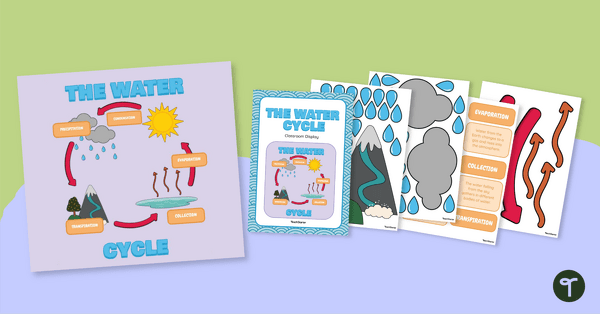
Water Cycle Diagram Classroom Bulletin Board Display
Learn about the stages of the water cycle with this interactive classroom water cycle display.
- Plus Plan
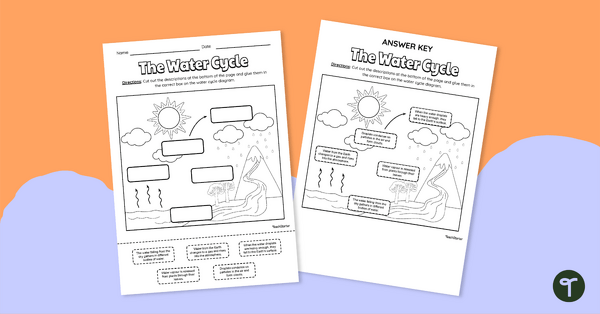
The Water Cycle - Cut and Paste Worksheet
Sequence the steps of the water cycle with a cut and paste worksheet.
- Free Plan
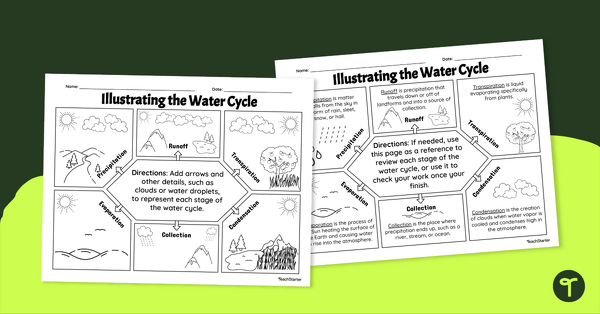
Illustrating the Water Cycle – Template
Illustrate the stages of the water cycle with this printable template.
- Plus Plan
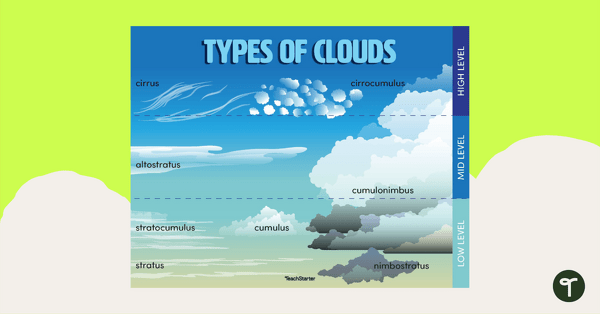
Clouds and Their Position – Poster
Learn about the different types of clouds and their position within the atmosphere with this printable poster.
- Free Plan
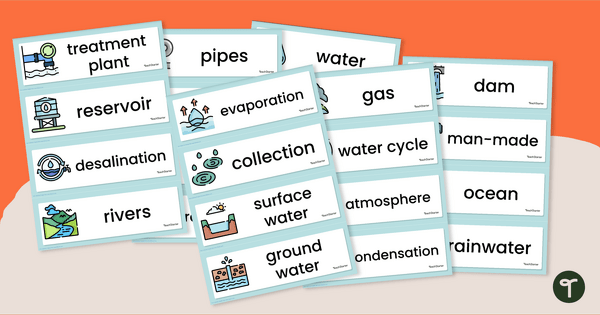
Water Cycle Words - Illustrated Word Wall
Boost vocabulary skills and understanding with an illustrated water cycle word wall.
- Plus Plan
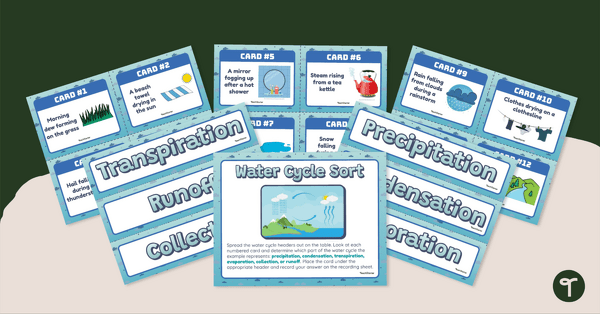
Water Cycle Sort – Sorting Activity
Use knowledge of the steps in the water cycle to categorize examples with this sorting activity.
- Plus Plan
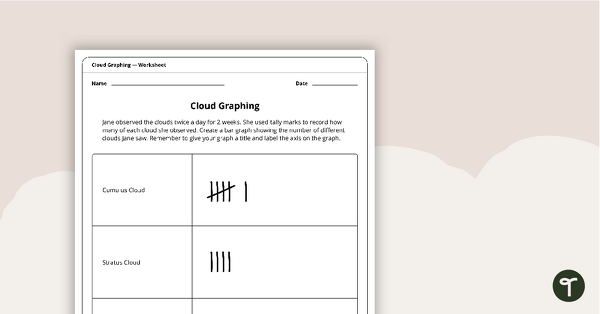
Cloud Graphing Activity
A worksheet to use when graphing cloud observations.
- Plus Plan
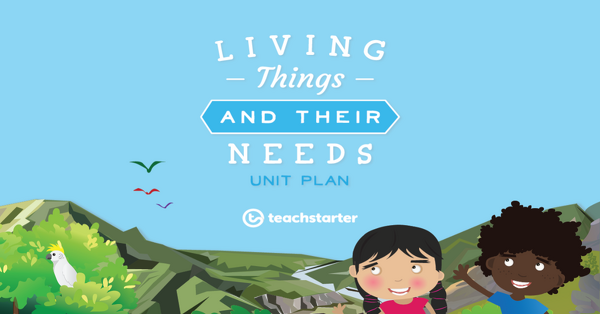
Making a Mini Water Cycle Experiment
A 60 minute lesson in which students will investigate how the water cycle works.